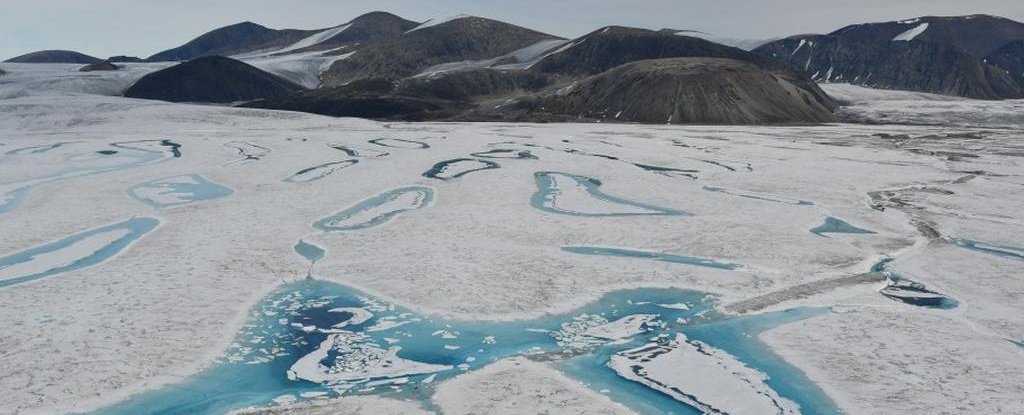Products You May Like
A massive chunk of Canada’s last fully intact ice shelf, some 4,000 years old, has broken off, reducing the shelf by more than half, scientists reported last Sunday. After separating from the shelf, the piece split in two, forming an iceberg almost the size of Manhattan.
Climate change likely fuelled the collapse of the shelf, researchers said. This summer, the region’s temperature was 9 degrees Fahrenheit (5 degrees Celsius) warmer than the 1980 to 2010 average, Luke Copland, a glaciology professor at the University of Ottawa, told the Associated Press.
“Above normal air temperatures, offshore winds, and open water in front of the ice shelf are all part of the recipe for ice shelf break up,” the Canadian Ice Service said on Twitter.
A research camp was lost when the shelf broke apart, as was the Northern Hemisphere’s last known epishelf, a kind of freshwater lake, flanked by ice, that sits on top of ocean water.
‘Entire cities are that size’
Located on the northwestern edge of Ellesmere Island, in the Canadian territory of Nunavut, the Milne ice shelf likely collapsed on July 30 or 31, according to ice analyst Adrienne White of the Canadian Ice Service.
Satellite imagery shows that about 43 percent of the shelf broke off, forming pieces that were up to 260 feet (80 metres) thick.
A huge section of the Milne #IceShelf has collapsed into the #Arctic Ocean producing a ~79 km2 ice island. Above normal air temperatures, offshore winds and open water in front of the ice shelf are all part of the recipe for ice shelf break up. #MilneIceIsland #Nunavut #seaice pic.twitter.com/fGfj8Me9tA
— ECCC Canadian Ice Service (@ECCC_CIS) August 2, 2020
“Entire cities are that size,” Copland told Reuters. “This was the largest remaining intact ice shelf, and it’s disintegrated, basically.”
Unlike glaciers, which sit atop land, ice shelves float in the ocean. They’re typically hundreds to thousands of years old and thicker than sea ice. Before the Milne ice shelf broke apart, it was larger than DC.
Temperatures rise faster in the Arctic
The Arctic is warming much faster than the rest of the world, a phenomenon known as polar amplification, and those hot temperatures are causing ice to melt. Today, for example, polar ice caps are melting six times faster than in the 1990s.
In Canada, there used to be a continuous ice shelf spanning the northern coast of Ellesmere, but human-made warming has caused it to break apart, White said.
By 2005, Milne was “really the last complete ice shelf,” she told the Associated Press.
While scientists considered Milne to be less vulnerable to collapse, as it’s protected in the Milne Fiord, the shelf has sustained cracks over the years.
This article was originally published by Business Insider.
More from Business Insider:
